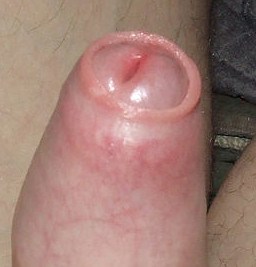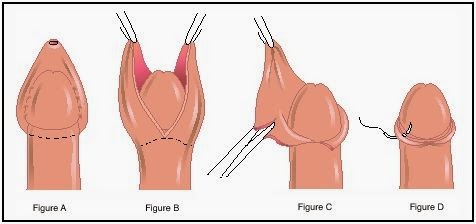An overview of the reasons why circumcision takes place and what the benefits and risks are.
Introduction by Colin Richards
In my work as a sex engineer, I focus mostly on the sexual aspects of relationship so my comments on circumcision are regard to sexual performance rather than the health or religious aspects.
I do sometimes see male clients who have challenges in having comfortable fulfilling sex due to having a tight foreskin ( Phimosis ). I appreciate that at birth it may sometimes be difficult for doctors to assess an infant accurately as to whether the boy has the potential for a tight foreskin or not but if he does and it is not dealt with then later in life this can prove a problem when having penetrative sex.
Men with extremely tight foreskins, as well as having to be very careful around personal hygiene, do also find penetration difficult. If the fit in the vagina is tight then the action of penetration can be extremely uncomfortable even painful leading to tearing and bleeding. In male to male anal sex or male to the female anal sex, penetration can prove impossible. This is not good for the man in question, but it does also mean the partner will have to accommodate this restriction within the sexual relationship. For a female partner, it will likely mean that any inward thrusts are gentle which some women can find to passive and so can be frustrating. Oral sex can also be awkward as again the mouth action has to accommodate an upward motion rather than downward motion which if the person giving is used to either a circumcised male or a male with a retractable foreskin can be difficult to get right. Likewise, giving hand masturbation will be different since from a young teenager the man will have developed a technique that is comfy for him, usually stroking upwards with light strokes down, the opposite to the way of most men masturbate.
I once saw a male client who at the age of 40 had to have his foreskin removed because of health reasons. Although the health problem was removed by the surgery having this done at such a late age proved to be quite psychologically damaging for him. After the procedure was completed no emotional help was offered so after a few months of stress and embarrassment he came to me to try to come to terms with his new appearance and to learn to feel again. He felt he no longer recognised himself saying his penis looked very different from what he was used to seeing. He felt a lesser man. Secondly, he could no longer masturbate effectively because being without foreskin he could no longer use the technique he had always used before. The circumcision meant that he now had extremely sensitive glans which now being exposed he was not used to. Clearly, this client should have had a circumcision at birth, why he did not even he does not know.
T
Circumcision is a surgical procedure which removes the piece of the skin that covers the tip of the penis. It’s a common procedure in many countries, including the U.S. It’s performed on a baby boy, often when he’s a newborn, usually before he is 10 days old.
The procedure takes about 10 minutes and a local anaesthetic is applied. A plastic ring is put on the penis and what we call the foreskin is removed. The procedure is similar for older boys and men but is usually carried out under general anaesthesia.
Why People Circumcise Their Sons
Circumcision is common in many countries. Before we look at reasons for male circumcision, let’s see what the statistics are in the U.S. and elsewhere in the world. Globally, it’s thought that an estimated 37 per cent of males are circumcised Read Article
Some Facts about Circumcision
- The foreskin, containing 20,000 nerve endings as opposed to the 8,000 in a clitoris, is a highly sensitive, functioning part of the male anatomy. Its purpose is to protect the glans, or the head of the penis from abrasions and to keep dirt and bacteria from the urinary tract.
- The average adult foreskin consists of 1½ inches of an outer skin, 1½ inches of inner mucosal lining – totalling a length of 3 inches – and is 5 inches in circumference when erect. This amounts to a surface area of 15 square inches, or a surface area equivalent to that of a 3″ by 5″ inch index card.
- Circumcision is not routinely practised in most countries. In fact, The United States is the ONLY country where circumcision is done routinely for non-religious reasons. Aside from being a Muslim and Jewish cultural practice, it is a very American practice.
- When the foreskin is removed, the head of the penis can develop a thick layer of skin to protect it, making it less sensitive.
- Circumcision can reduce a baby’s risk of getting a urinary tract infection.





